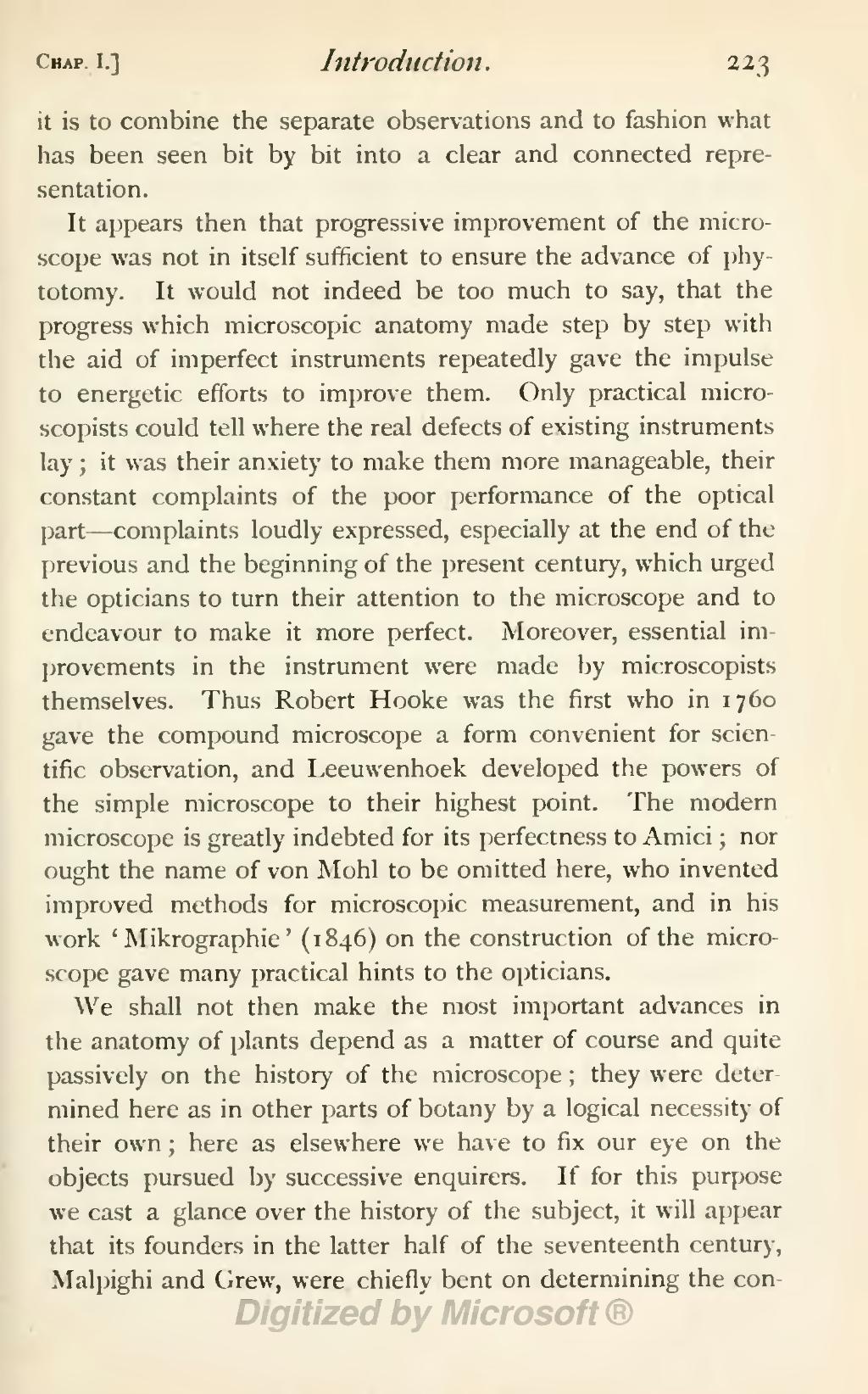it is to combine the separate observations and to fashion what has been seen bit by bit into a clear and connected representation.
It appears then that progressive improvement of the microscope was not in itself sufficient to ensure the advance of phytotomy. It would not indeed be too much to say, that the progress which microscopic anatomy made step by step with the aid of imperfect instruments repeatedly gave the impulse to energetic efforts to improve them. Only practical microscopists could tell where the real defects of existing instruments lay; it was their anxiety to make them more manageable, their constant complaints of the poor performance of the optical part—complaints loudly expressed, especially at the end of the previous and the beginning of the present century, which urged the opticians to turn their attention to the microscope and to endeavour to make it more perfect. Moreover, essential improvements in the instrument were made by microscopists themselves. Thus Robert Hooke was the first who in 1760 gave the compound microscope a form convenient for scientific observation, and Leeuwenhoek developed the powers of the simple microscope to their highest point. The modern microscope is greatly indebted for its perfectness to Amici; nor ought the name of von Mohl to be omitted here, who invented improved methods for microscopic measurement, and in his work 'Mikrographie' (1846) on the construction of the microscope gave many practical hints to the opticians.
We shall not then make the most important advances in the anatomy of plants depend as a matter of course and quite passively on the history of the microscope; they were determined here as in other parts of botany by a logical necessity of their own; here as elsewhere we have to fix our eye on the objects pursued by successive enquirers. If for this purpose we cast a glance over the history of the subject, it will appear that its founders in the latter half of the seventeenth century, Malpighi and Grew, were chiefly bent on determining the con-
